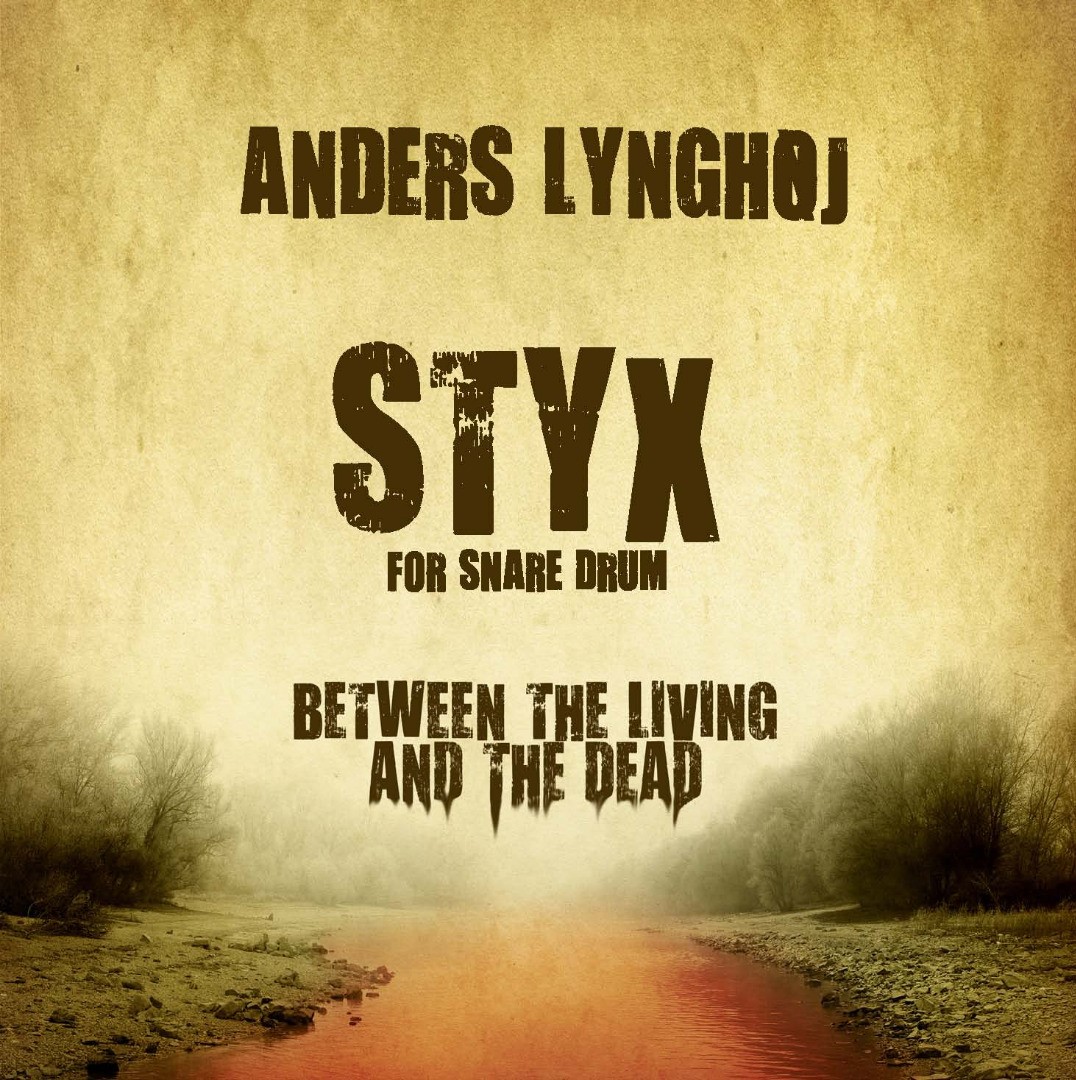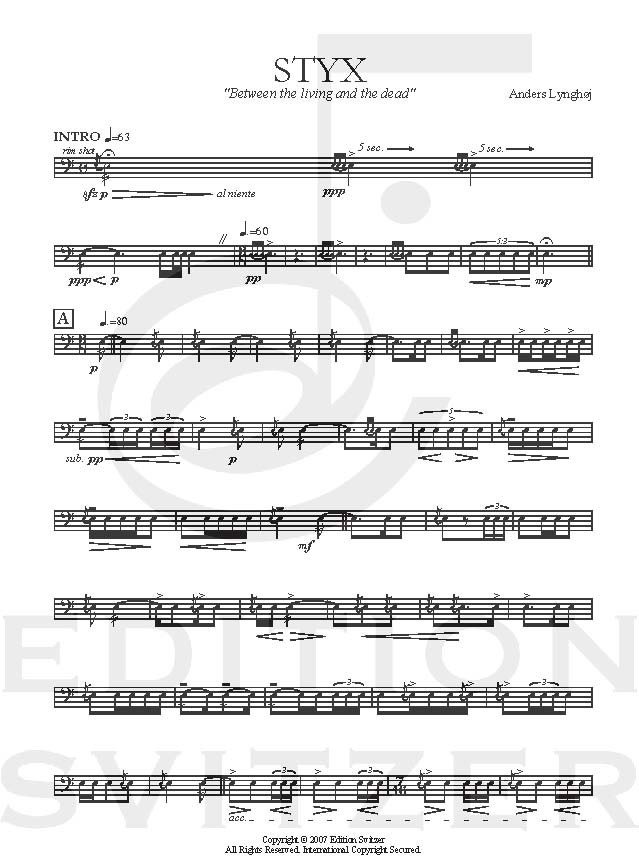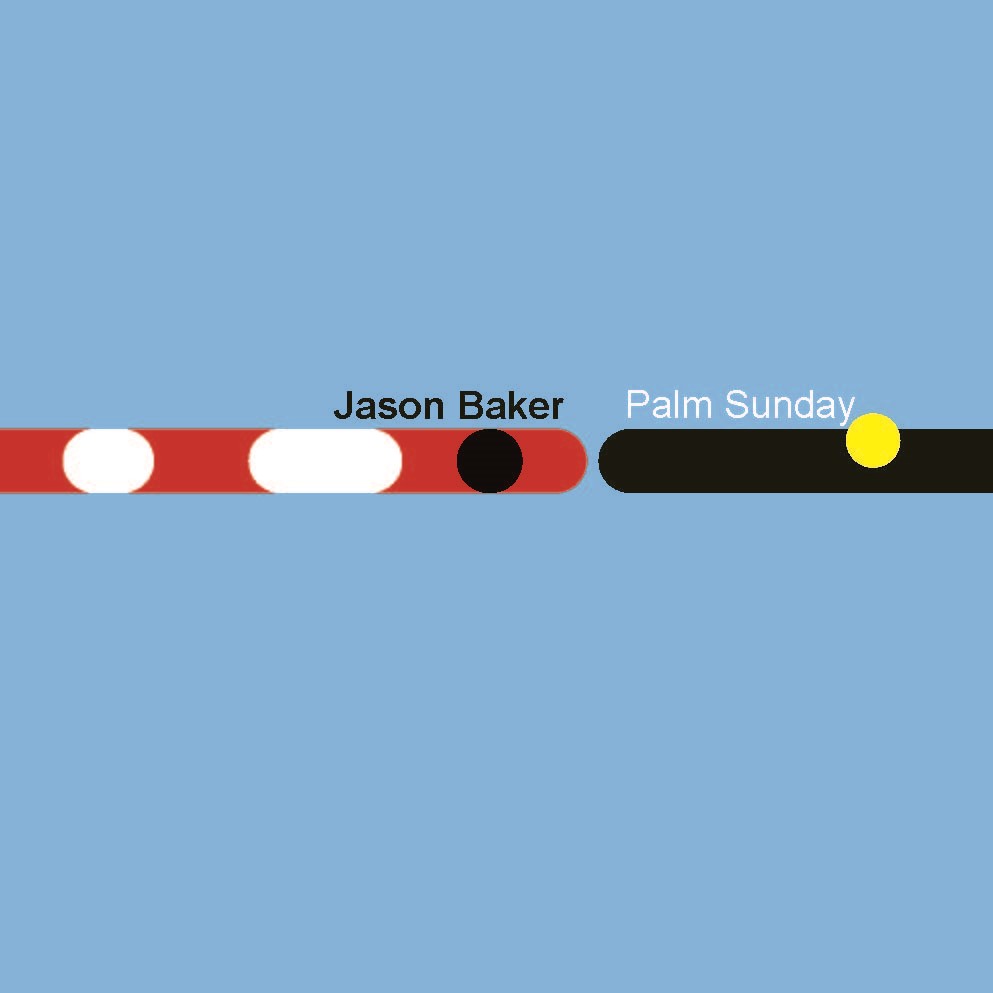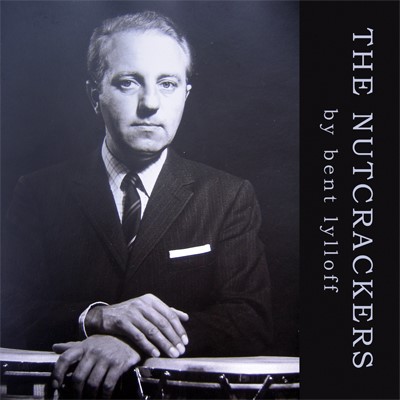Item details
-
Description +
-
Duration: 6 min.
The river of which many know its name, without knowing its origin or what it really stood for.
A river that separates the world of the living from the world of the dead. Styx it is said winds around Hades (hell or the underworld are other names) nine times. The gods respected the Styx and swore binding oaths by it. Gods that did not follow through on such an oath had to drink from the glass, causing them to lose their voices for nine years.
According to some versions, Styx had miraculous powers and could make someone immortal/invunerable.
Its name comes from the Greek word stugein which means hate.
-
-
Instrumentation +
-
Snare Drum
-
-
About the composer +
-
Please contact the Publishing House for more information.
-
-
Reviews +
-
Percussive Notes, March, 2012
Inspired by the river in Greek mythology, this concert-length work (approximately six minutes) for solo snare drum presents a journey through a variety of tempi, styles, and timbres for the instrument. While the composer does not indicate whether any of the musical material is programmatic in nature, a lengthy explanation of the river Styx and its role in Greek mythology is given in the front matter of the piece. Performers can draw their own conclusions as to how this information should inform the performance of the work.
After a brief, spacious introduction, “Styx” commences with a graceful section in 3/8 (somewhat reminiscent of the first solo from Delelcuse’s Douze Etudes). This is followed by a brief multi-meter passage in a suddenly quicker tempo, leading into the most aggressive portion of the piece characterized by driving sixteenth notes and accents at 172 bpm. After this, a slower section commences with rudimental roll passages, indicating a strong “Three Camps” influence.
The next two sections are the most interesting. The first is a cadenza, which gives room for improvisation, while the second uses foot stomping, playing on the rim, and playing on the drum (without snares). Clearly, the performer must be aware of the concert hall in which the solo is to be performed in order to make preparations to produce the best “bass” sound with his or her foot. From here, the piece concludes with several brief passages, each with its own tempo and metric orientation.
While the form and construction of “Styx” may seem rather schizophrenic, perhaps this is the composer’s attempt to portray the river that is “between the living and the dead.” The abruptness of each section’s ending could be interpreted as the feeling one has regarding death while crossing the river into Hades.—Jason Baker
-
-
Credits +
-
Front cover graphics and layout: Ronni Kot Wenzell
Copyright © Edition Svitzer
Printed in Copenhagen, Denmark
-







